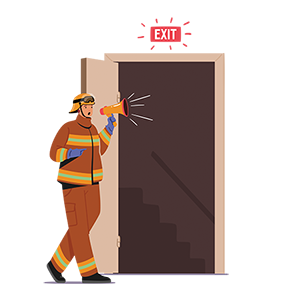
This article appeared as "Safety First" in the Fall 2022 issue of Independent School.
In the wake of numerous mass shootings at the close of last school year, schools across the country are evaluating, adjusting, and testing safety and security systems. I spoke with Chris Joffe, of Joffe Emergency Services, which supports more than 2,000 schools throughout the country, about his top recommendations for our schools.
Take a deep breath. In complex and challenging situations, one of the biggest barriers to progress is the overwhelming sense of needing to solve every problem, to account for every risk. Joffe reminded me that we saw this at the beginning of the COVID-19 response, and it applies here, too. Trying to do it all right away will inevitably lead to failure. Instead, take a breath and focus on the top priorities.
Start a dialogue to prevent misunderstanding. Joffe reminds us that—to paraphrase Brené Brown—in the absence of data, we all make up stories. Joffe advises schools to leverage the trust they built by communicating robustly throughout the pandemic and continue to fill information voids, even when they’re not managing emergencies.
Build redundancies in your leadership structure. You’ve likely predetermined who will be your school’s top leader in an emergency, but do you know who will be the second, third, fourth, and fifth in the line if your “incident commander” is sick or has gone out for coffee when an emergency occurs? Joffe says this may sound like a lot of redundancy; it’s not.
Anticipate threats to your community and surroundings. In the 30 days following the 2018 Parkland, Florida, school shooting, there was a 300% increase in the number of threats and incidents of violence in schools. If you don't have a threat assessment team in place yet, it’s time to build it.
Conduct practice drills to build confidence and comfort. The beginning of an emergency is marked by a moment of denial. More practice leads to a better plan, a shorter denial phase, and ultimately better results. You don’t need to start running live-fire simulations, but make progress and know this: Locked doors are the best safety tool we have when it comes to someone on campus who doesn’t belong there.
At the same time, talk to your mental health leaders about ways in which they can build trust and relationships among each audience in your community. It might be listening, talking, or something else—each community is unique.